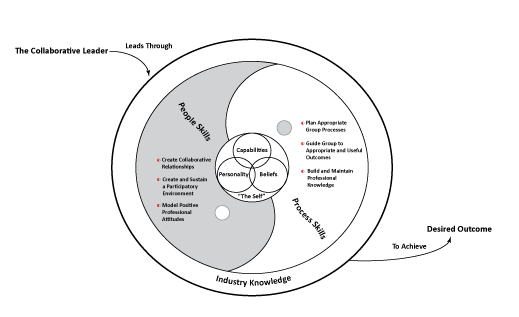June 2014 - The FoCuSeD™ Facilitator eNewsletter

Why your Company needs Leadership Skills Training | Gary Rush Facilitation
According to the Bersin 2014 Corporate Learning Factbook, spending on corporate training has grown 15% over the past year. It has been over seven years since it was this high. Because of the downturn in training, a knowledge gap has grown – especially in leadership skills training.
Proactive or Reactive?
It’s an age-old argument, do we provide training just in time, i.e., just when it’s needed, or do we develop a critical mass, i.e., in case it’s needed in the future. In leadership training, if you provide it just in time, you run the risk of bouncing between good leadership and not-so-good leadership. If you wait until the need arises, you are left with a gap while new leadership comes up to speed. A continuous pipeline of new leaders ensures consistency.
Competitive Edge
The single most important factor in employee satisfaction is trust in leadership. Effective leaders are able to inspire and harness the collective wisdom of the employees making well-lead organizations more effective – a clear competitive edge. This translates into huge savings. Looking at IT projects alone, studies have shown that 25% of IT projects fail. 54% fail because of poor project management, i.e., poor leadership. With the average cost of IT projects hovering around $1 million, the cost of ineffective leadership is staggering. Leadership and project management training alone can save organizations millions providing a high return on investment.
Why Leadership Training is Critical
Leadership training is critical. Leadership is a role and requires skills to lead people. Leaders need to know:
- People Skills – How to lead people, how to inspire and motivate them, how to deal with conflict, how to communicate, how to actively listen, how to engage and turn around difficult people, and how to form teams. These are often referred to as “soft skills”, but I prefer “People Skills” as these skills are all about inspiring, engaging, and leading people.
- Visioning – Organizations need leaders with vision so that they continue to thrive and move forward. People need leaders with vision to inspire them to do their best and feel good about their future.
- Collaboration – Command and control leadership doesn’t harness the wisdom of the people as well as collaborative leadership and by collaboration I don’t mean interdepartmental cooperation. By collaboration, I mean getting people to enthusiastically work as a team towards a common goal. This is more than teambuilding, it is knowing how to form a group of people into a team and then make decisions collaboratively taking advantage of all their ideas for a common good.
These critical skills are essential to leadership. Learning these skills on the job or by watching others is haphazard at best.
How?
In 2003, the Center for Creative Leadership conducted an Emerging Leaders Research Survey and found that 45% of emerging leaders wanted leadership and vision training. The vast majority wanted this training to be face-to-face rather than through reading a book or taking a webinar. Emerging leaders need to ask questions and practice in a learning environment. Don’t expect a one-day leadership class to cover all the needed skills. It takes more than one day to effectively develop leadership skills to inspire collective action.
MGR Consulting, Inc.
If the skills described to lead people sound a lot like Facilitator skills, they should. I’ve been training Facilitators for over 30 years and most go on to become effective leaders because of my facilitator skills training. Our new book, The FoCuSeD™ Leader – Facilitator Lessons for Collaborative Leaders is in its finishing stage. This book will be available for purchase later this summer and it will be provided to students of our FoCuSeD™ Leader class. ![]()
Can’t we all just Collaborate?
Commentary | Gary Rush Facilitation
Like most parts of the U.S. this year, Chicago had a pretty difficult winter. I was walking down the sidewalk one day when the snow was piled knee-high around cars parked on the street. It struck me that most of the buildings had multiple people living in them, from families in single-family homes to multiple people living in apartment buildings or condos, yet their sidewalks and the street parking in front of their residences was knee-high with snow. The snow around cars inconvenienced many and parking was non-existent. So why had no one just grabbed a shovel and cleaned up the sidewalk and street right in front of their residence? It couldn’t take more than 15 to 20 minutes and all of the hassle would be gone. If everyone on the block did that, the streets and sidewalks would be completely clean allowing pedestrians to walk without difficulty. What if the entire city joined in? Like most cities, most of the residents expect the city to clean their streets and take care of the snow. I know that is why we pay taxes, but can’t we all just collaborate? It is our city, so what if we all just decided to work together and clean up our area? That doesn’t seem like a lot to ask.
Let’s look beyond snow. We all want the government to take care of infrastructure. We wait, complain, and wait some more. We elect someone who promises change, but he or she often gets caught up in the bureaucracy. If we set the example and collaborated, I’m guessing that the politicians would follow our lead. How much could we get done then? ![]()

